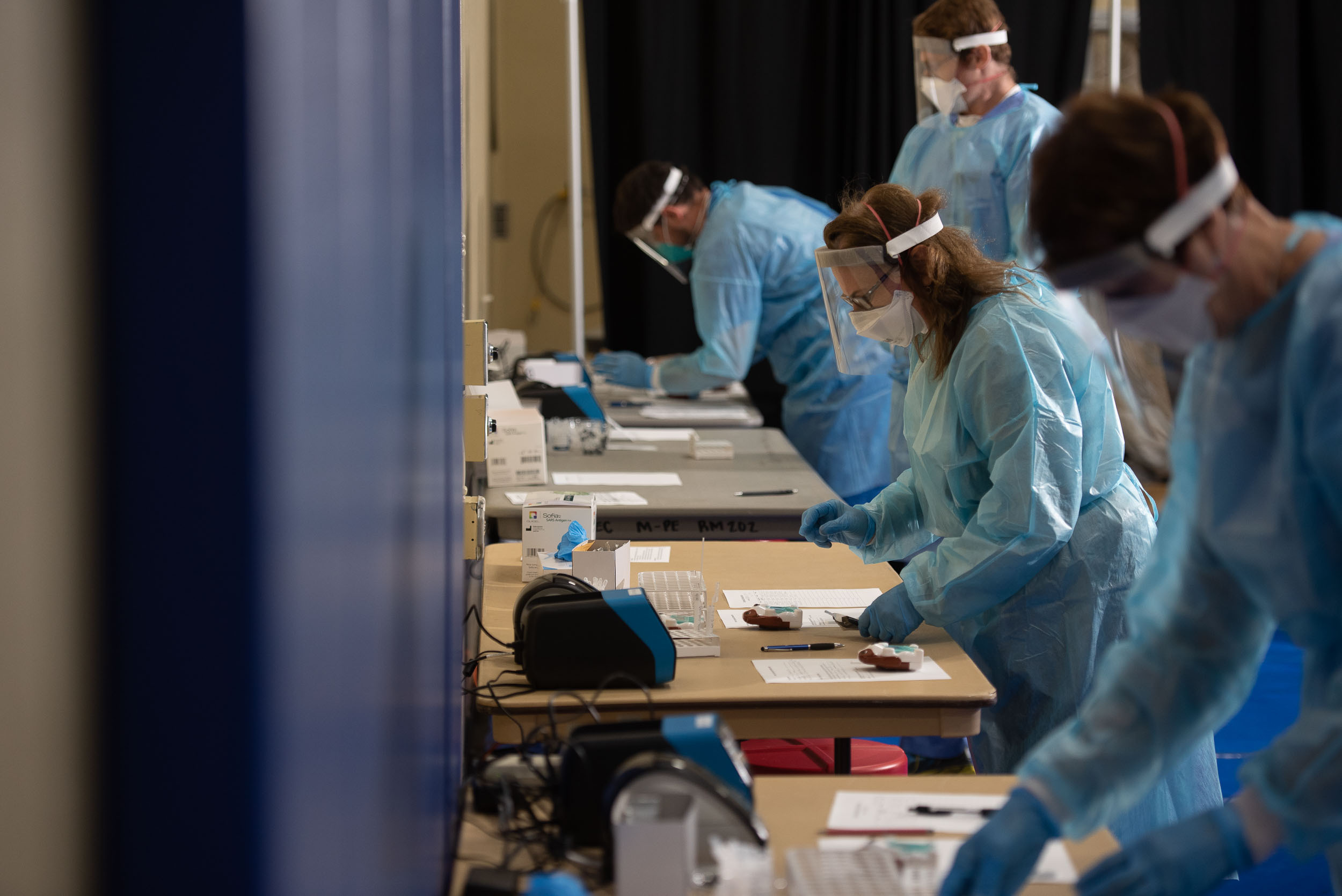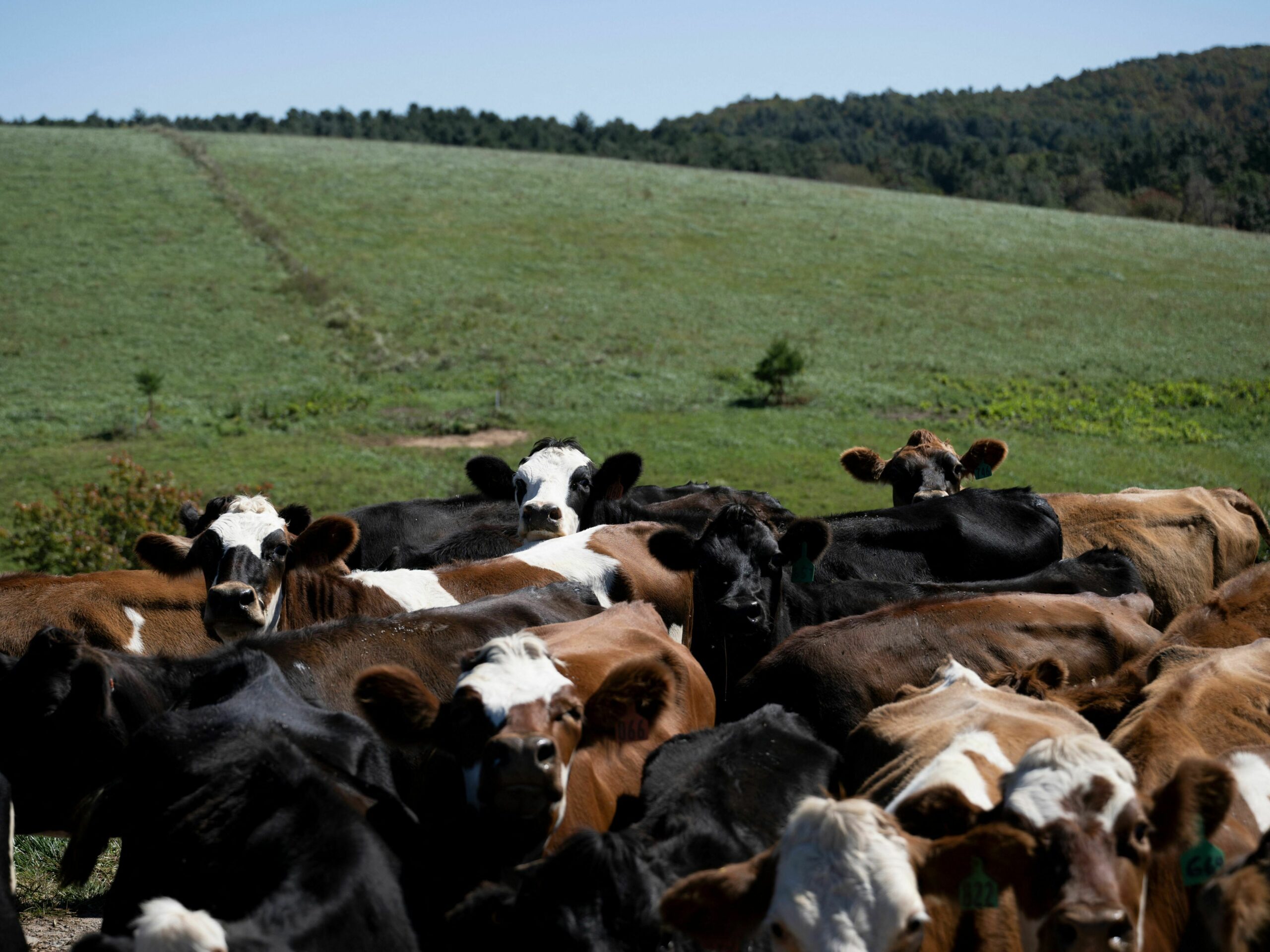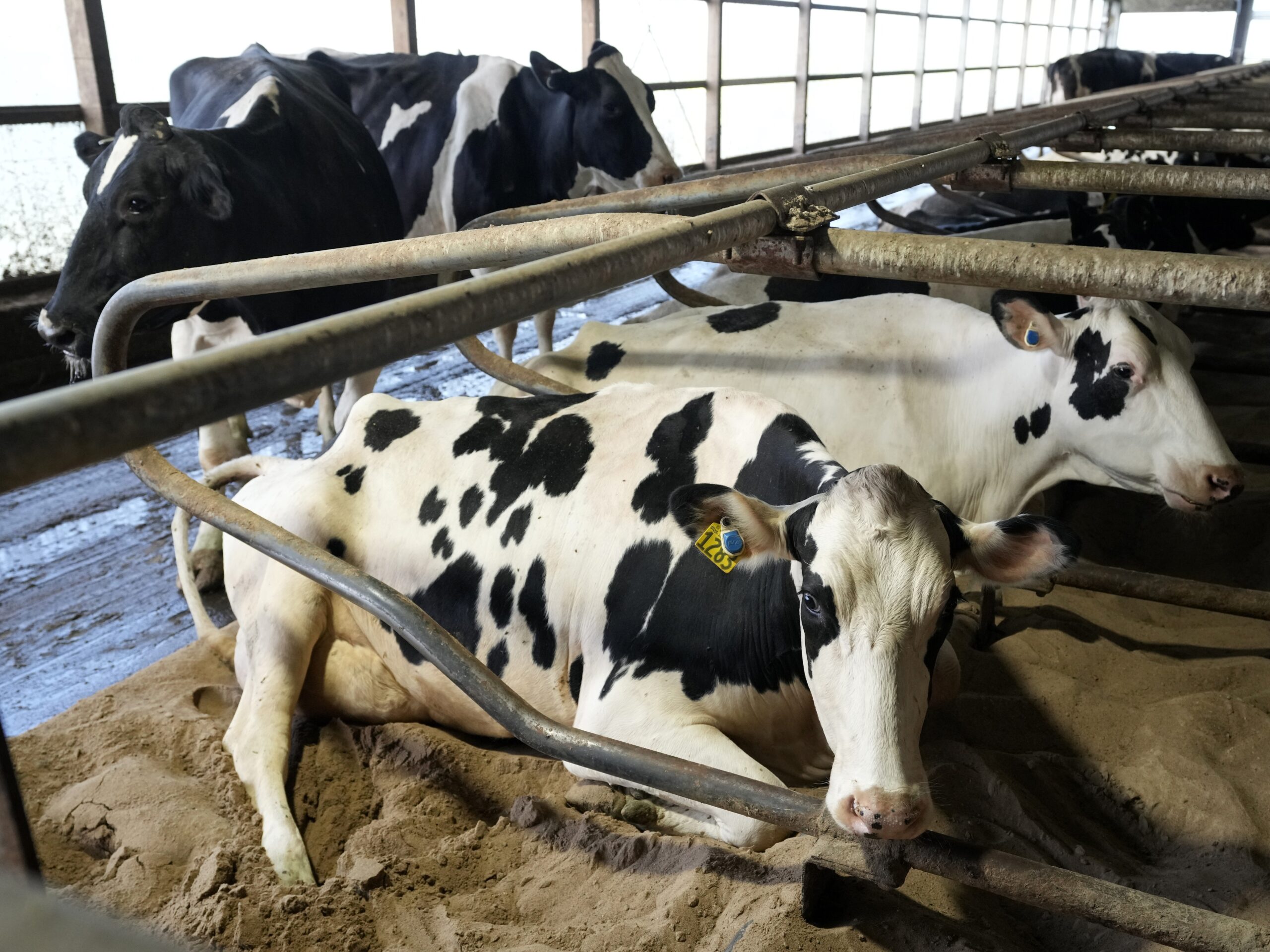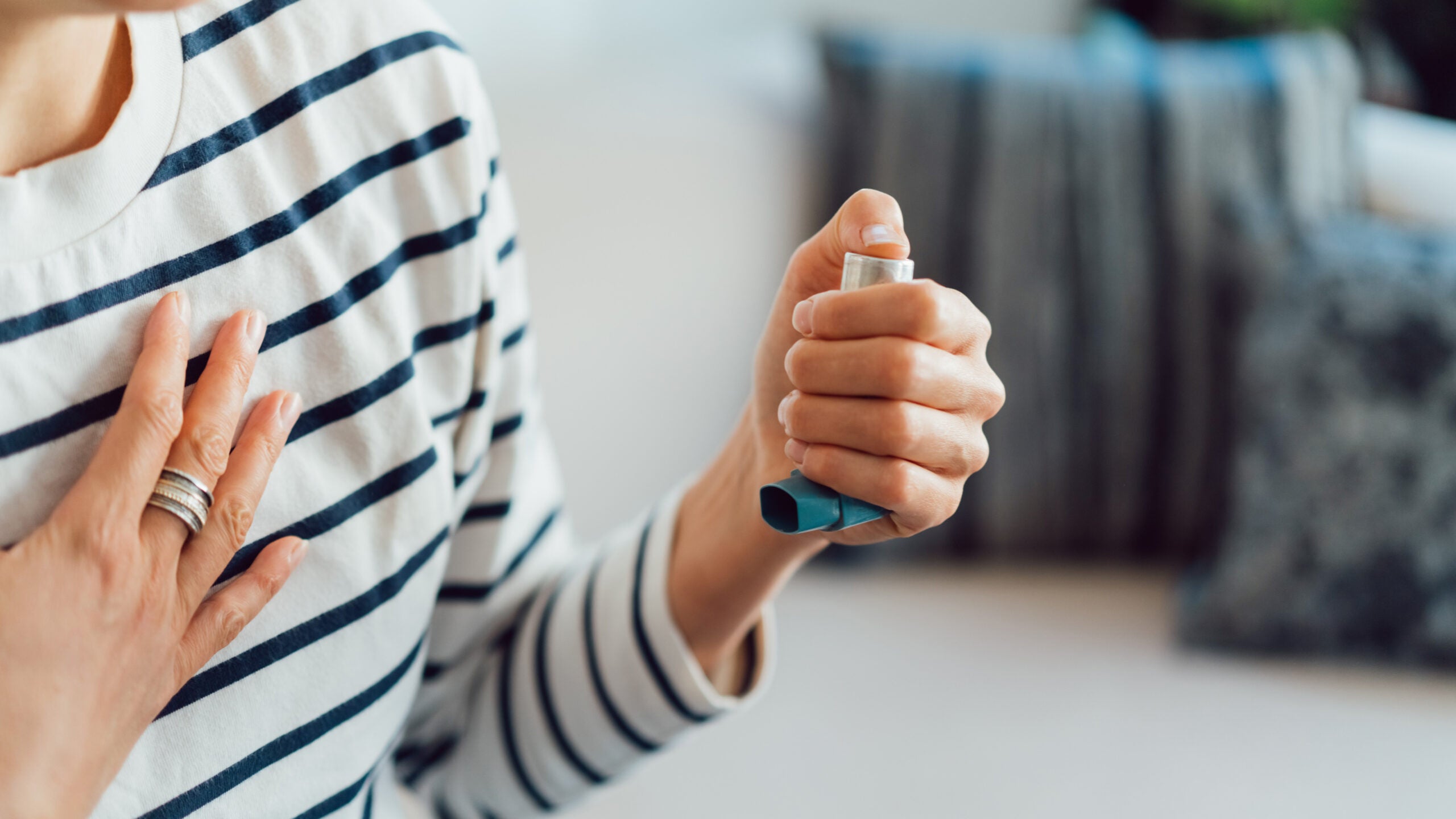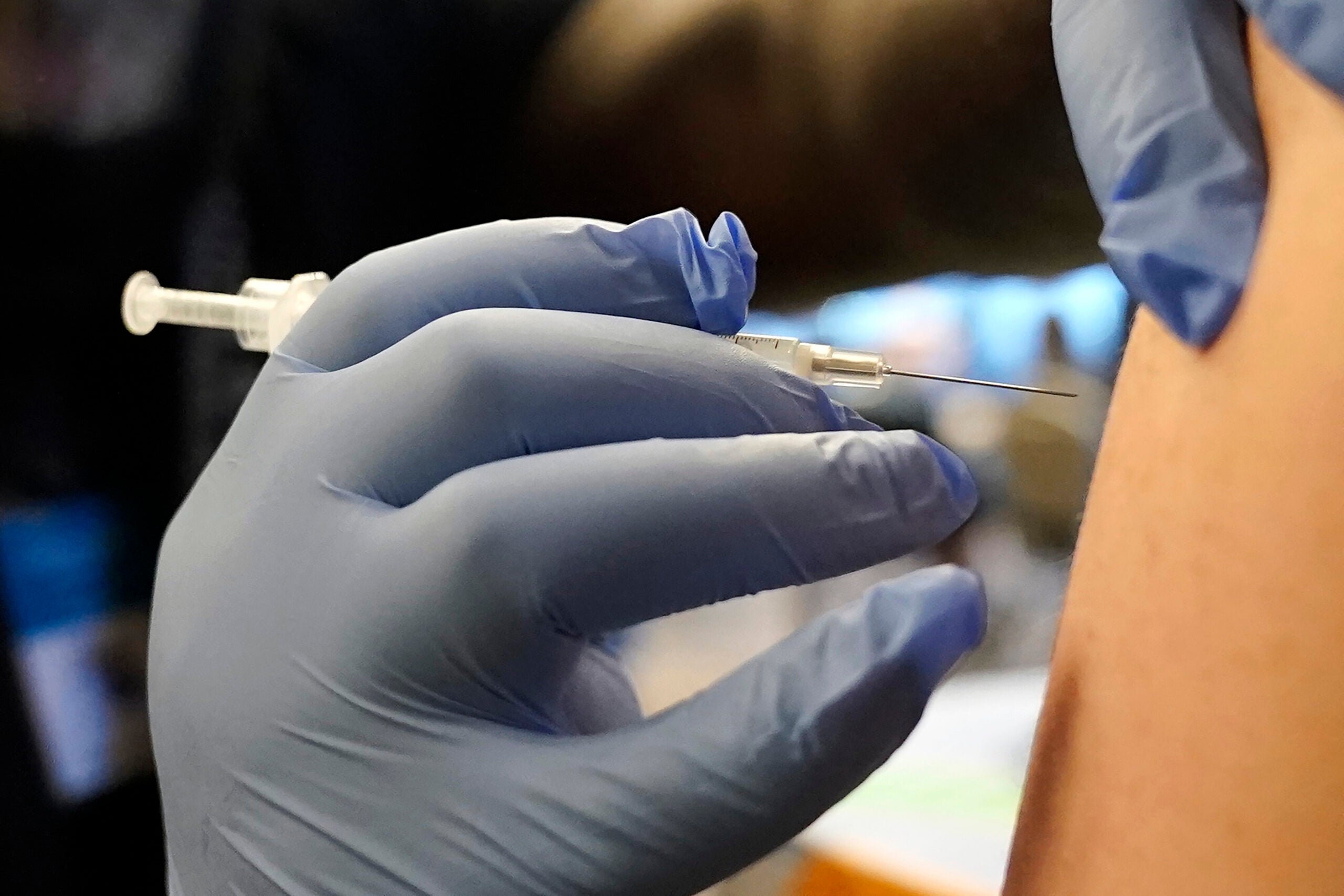With Thanksgiving right around the corner and many people antsy to see family and friends, doctors are warning that testing negative for COVID-19 is not a permission slip to party.
Several people wrote into WHYsconsin asking about testing negative for COVID-19. WPR reached out to experts to figure out what people need to know.
Jonathan Temte, associate dean for public health and community engagement at the University of Wisconsin-Madison School of Medicine and Public Health, said lab tests are imperfect, and there are factors people should consider before making the assumption that a negative result means they’re safe to be around others.
Stay informed on the latest news
Sign up for WPR’s email newsletter.
For one, it’s possible for a test to return a false negative. It’s also possible for someone infected to be tested too early, and to not have traces of the virus in the site where the specimen is collected, Temte said.
Even if a negative test is accurate, Ajay Sethi, masters of public health program director and associate professor of population health sciences at UW-Madison, said the result means a person is not infected at the time of testing. There’s still a chance they contracted the virus in the period between getting tested and receiving results.
He also pointed out that waiting in a long line to get tested, even while masked, means potential exposure to the virus.
Nevertheless, Sethi said if the person getting tested “had zero exposure to other people during that period and zero exposure in the 14 days prior to getting tested, then it is very unlikely that they are carrying the virus.”
Because testing is a snapshot from the time of testing, public health experts say it’s not advisable to use a negative test as a justification for spending time with family during the holidays. Brian Merkel, associate professor of biology at UW-Green Bay, said a better option before seeing others is to quarantine for 14 days first.
Different Tests Come With Their Own Nuances
There are two types of tests that check for COVID-19. The PCR and the rapid antigen tests test for active infection, and are different from the antibody tests used to identify whether a person had an infection in the past. Temte said there are currently hundreds of different types of SARS-CoV-2 tests, and each of them have their own nuances.
PCR tests look for molecular genetic material of the virus, Merkel said. These tests can take days to return and are very accurate, he said. But they could also return a false positive for someone who recently had the disease but is no longer contagious, by picking up residue from the infection.
Rapid antigen tests, which are newer than the PCR tests, are somewhat less accurate — according to Merkel, they’re right about 90 percent of the time. Instead of testing for genetic material, these test for viral proteins. Temte said the rapid antigen tests have higher rates of false negatives, but the rate of false positives is low.
Sethi said results from the rapid antigen and PCR tests aren’t quantitative, meaning they don’t measure how much of the virus someone has.
“Labs that do PCR testing can get a clue as to whether someone has a lot or less virus in the sample tested, but they do not provide that information in (the) result’s report,” he said. “There is legitimate debate in the laboratory community about whether evidence for higher amounts of virus in the tested sample should be included in the result’s report.”
In most people who test positive for the virus, doctors said the average amount of time that a virus is able to be transmitted is about 10 days.
“The guidance for isolation is 10 days after a laboratory test is positive,” Temte said, noting the person should be without a fever for at least 24 hours without the help of fever-reducing medication.
Your Questions, Answered
Some WHYsconsin question-askers asked about how to handle specific scenarios related to negative tests. The following responses from the doctors who answered these questions have been edited for brevity and clarity.
Q: If I test negative, but I live with or have been around someone who felt sick and is awaiting results, am I supposed to quarantine?
Sethi: If you have your test results back before the person who feels sick, then you should quarantine until at least that person’s results come back. Most importantly, the person who feels sick needs to be isolated.
Q: If I was exposed to someone with COVID-19, got tested a few days later and tested negative, do I need to go get tested again before 14 days have expired?
Temte: No, but you should adhere to the guideline for 14 days of quarantine.
Q: What are the chances that I’ll test positive within 14 days of being exposed to someone if I tested negative a few days in?
Sethi: Assuming that that person was confirmed to have COVID-19 at the time you were exposed to them, the chances of a second test being positive increases if you develop symptoms within those 14 days and you are tested when you are symptomatic. The chances of a second test being positive are not well documented in people who never develop symptoms after exposure. The chance is not zero.
Merkel: If the person was highly infectious as you were exposed, then a very good chance. Some reports indicate that those infected may be the most contagious 48 hours prior to experiencing symptoms.
Wisconsin Public Radio, © Copyright 2024, Board of Regents of the University of Wisconsin System and Wisconsin Educational Communications Board.

